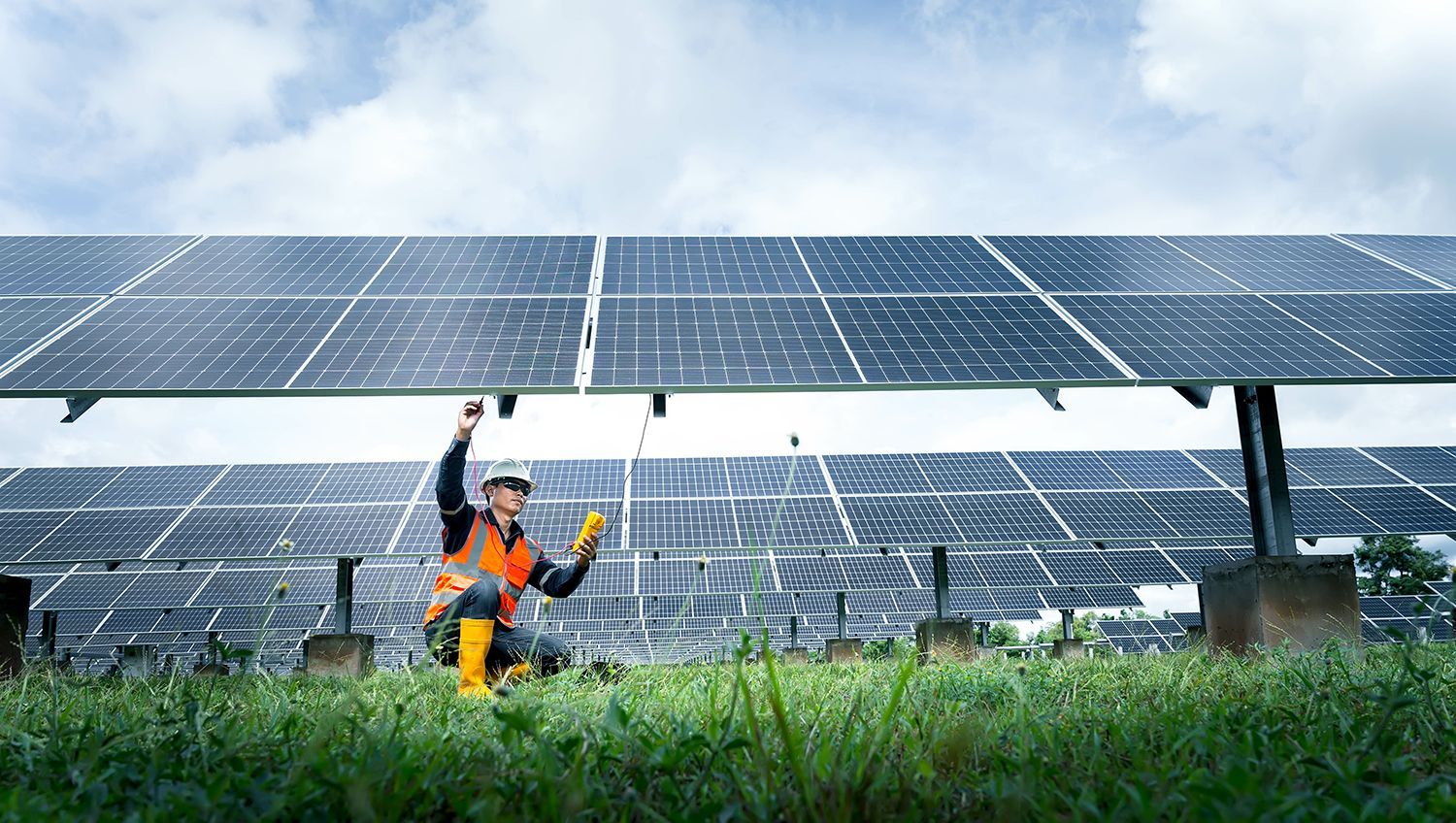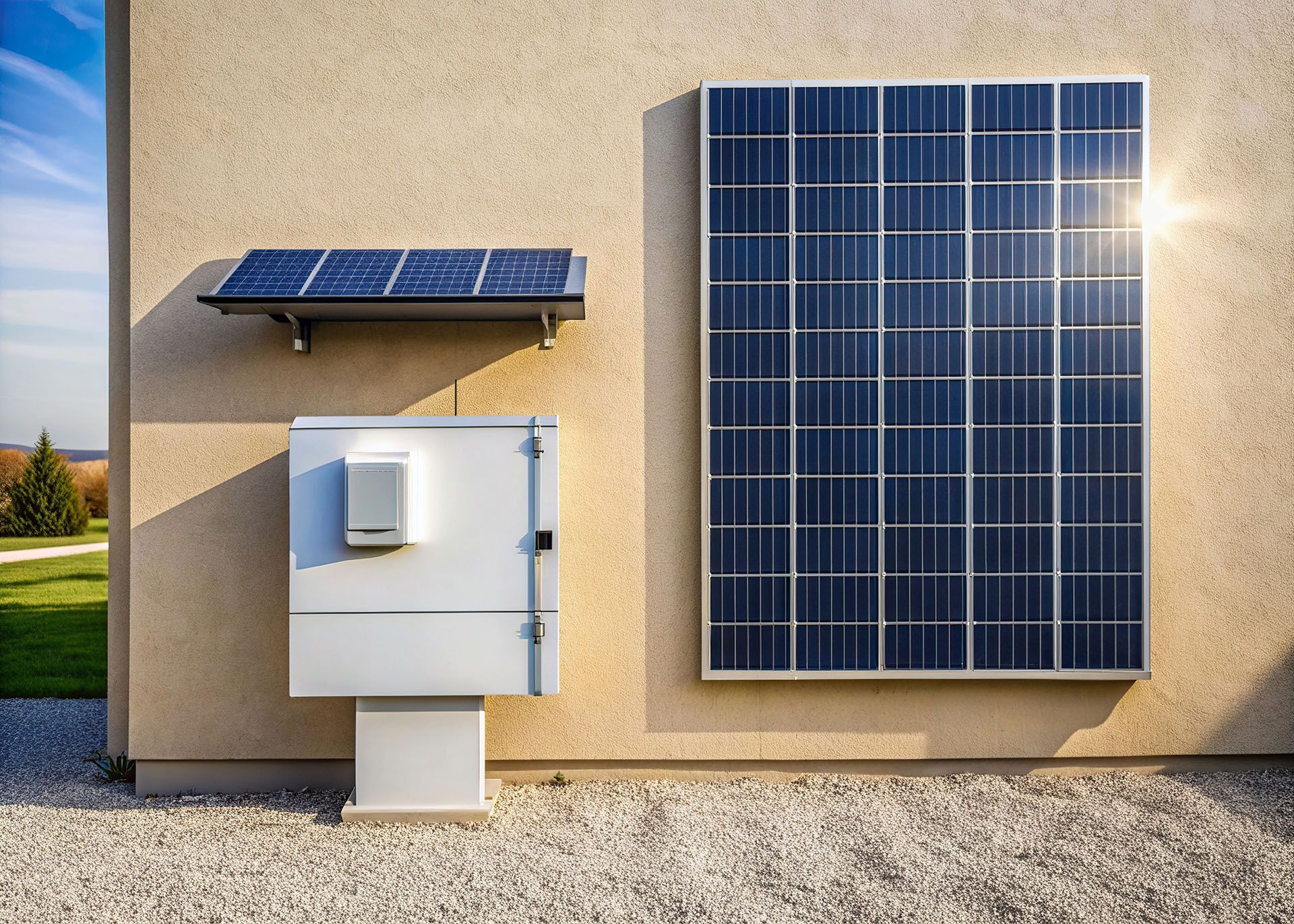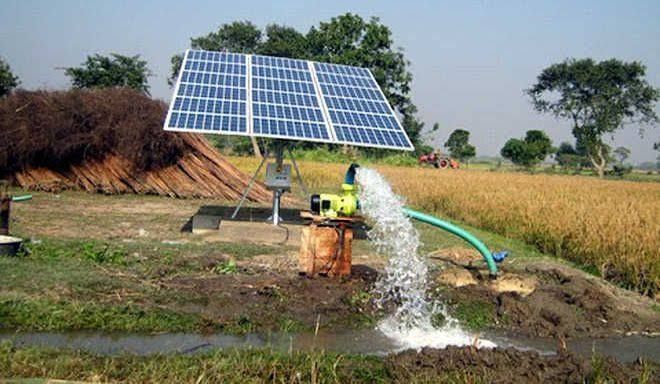Have A Question?
Solar Farms: Estimating Land Requirements for a 5 MW Solar Farm
Determining the land required for a 5 MW solar farm depends on several factors:
Key Considerations
Panel Efficiency
Higher efficiency panels produce more power per square foot, reducing the land needed.
Panel Layout and Spacing
The arrangement and spacing of panels impact land use. Fixed-tilt arrays require more space than tracking systems that follow the sun.
Terrain
Flat, open land is ideal. Sloped or uneven terrain may require more acreage due to panel placement challenges and access road requirements.
Local Regulations
Zoning rules and setbacks from property boundaries affect how much land can be used for panels.
Additional Infrastructure
Space is needed for inverters, transformers, other electrical equipment, and maintenance access roads.
General Estimates
A rough guideline is 4-6 acres per megawatt (MW). Therefore, a 5 MW farm might need 20-30 acres. However, specific project details can significantly change this estimate.
Factors Affecting Land Needs
Fixed vs. Tracking Systems
Fixed systems generally need more land than tracking ones.
Panel Tilt Angle
Steeper angles for higher latitudes require wider spacing between panel rows, increasing land use.
Land Cost and Availability
Expensive or limited land may necessitate higher-efficiency setups to maximise output per acre.
Optimising Land Use
Strategies to maximise land efficiency include:
Bifacial Panels
Capturing sunlight from both sides increases energy output per panel.
High-Efficiency Panels
Investing in top-tier panels reduces the farm's overall footprint.

Bifacial Panels
Capturing sunlight from both sides increases energy output per panel.
High-Efficiency Panels
Investing in top-tier panels reduces the farm's overall footprint.
Tracking Systems
These systems maximise sun exposure throughout the day, reducing land requirements.
Meticulous Planning
Collaborating with solar experts ensures an optimised layout balancing energy production with land usage constraints.
Beyond the Panels
Remember, land isn't just for panels. You'll need space for:
- Electrical Equipment: Inverters, transformers, and other components require dedicated areas.
- Access Roads: Essential for the maintenance and operation of the solar farm.
- Potential Buffer Zones: Local regulations may require some land to be undeveloped around the farm's perimeter.
Consult Professionals
Please don't settle for guesswork when it comes to your solar project. Consult GES Energy, a leading solar consulting firm, for a precise and personalised assessment.
Our team of experienced solar professionals will conduct a thorough evaluation of your site, taking into account all relevant factors, such as:
Sun Exposure and Shading
We analyse your site's solar potential and identify optimal panel placement to maximise energy capture.
Topography and Terrain
We assess the land's contours and terrain features to design a layout that integrates seamlessly with your landscape.
Local Regulations and Permitting
We ensure compliance with all local zoning laws and permitting requirements, streamlining the approval process.
Energy Consumption and Goals
We understand your specific energy needs and project goals to create a solar system that aligns with your objectives.
Budget and Financing
We help you navigate financing options and incentives to make your solar investment financially viable.
By leveraging our expertise, you can rest assured that your solar project will be designed for optimal performance, efficiency, and regulatory compliance. Our goal is to help you harness the full potential of solar energy while maximising your return on investment.
Contact GES Energy today for a free consultation and let us help you bring your solar vision to life.
Financial Benefits of Battery Storage
Here are several ways to monetise commercial battery storage systems:
Energy Arbitrage
This involves buying electricity from the grid when prices are low (usually during off-peak times) and selling it back to the grid when prices are high (during peak times). This can be particularly profitable in markets with significant price fluctuations.
Demand Charge Management
Many commercial and industrial electricity tariffs include demand charges based on the highest power usage in a billing period. Batteries can reduce these charges by discharging during peak demand times, lowering peak usage.
Grid Services
Batteries can provide ancillary services to the grid, such as frequency regulation, voltage support, and spinning reserve. In some cases, utilities or grid operators pay for these services.
Virtual Power Plants (VPPs)
Batteries can be aggregated to form a VPP, which can sell energy and services to the grid. Participants in VPPs can earn money by contributing their stored energy to balance supply and demand in the electricity market.
Renewable Energy Integration
Batteries can store excess energy generated from on-site renewable sources (like solar or wind) and use it when generation is low, or demand is high. This maximises the use of renewable energy and can reduce energy costs.
Network Support
In some regions, network operators may pay for batteries to support the electricity network, such as alleviating congestion or deferring the need for network upgrades.
Retail Energy Sales
Some businesses can sell excess stored energy directly to other companies or consumers through peer-to-peer energy trading platforms.
Regulatory and Market Considerations
The profitability of commercial batteries depends on several factors, including:
Electricity Market Prices
Higher and peak price volatility can increase potential earnings.
Regulatory Environment
Policies and incentives for battery storage, such as subsidies or tariffs for grid services, can affect profitability.
Technology Costs
The cost of battery systems and their operational lifespan are crucial for determining the return on investment.
Australia offers a favourable environment for battery storage, supported by initiatives such as the Australian Renewable Energy Agency (ARENA) and the leadership of states like South Australia in battery storage adoption. Consult with GES Energy to understand the benefits, usage patterns, and available incentives or market opportunities. Engaging with experts in energy markets and battery technologies can also provide valuable insights tailored to your specific needs.
Browse by Categories
Speak to one of our specialists
Speak to one of our specialists →I hope you enjoy reading this blog post.
Greentech Engineering Solutions (GES) helps residents, businesses and industry transform energy systems for a smarter, cleaner future. As an EPC Solar specialist we manage projects from concept to feasibility, finance, engineering, procurement, construction and beyond.
I hope you enjoy reading this blog post.
GES Energy helps residents, businesses and industry transform energy systems for a smarter, cleaner future. As an EPC Solar specialist we manage projects from concept to feasibility, finance, engineering, procurement, construction and beyond.






